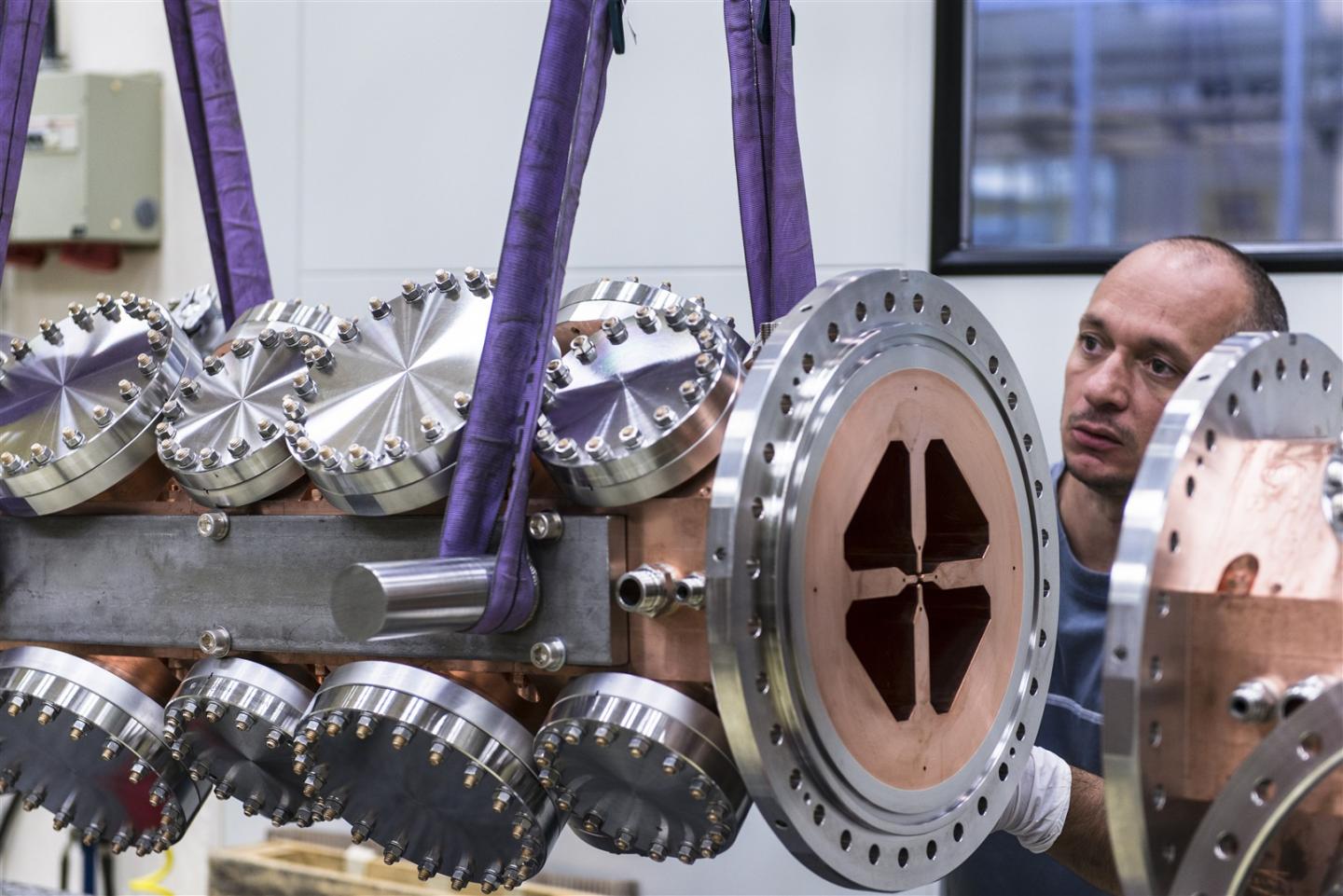During the long shutdown of the Large Hadron Collider (LHC) – scheduled to start on 10 February 2013 – a new linear accelerator, Linac 4, will replace the existing Linac 2 as the first link in CERN’s accelerator chain. It will deliver particles to the Proton-Synchrotron Booster at 160 MeV, more than triple the energy currently delivered by Linac 2.
First tests for the upcoming accelerator are underway, starting with the CERN-built radiofrequency quadrupole – a section of the accelerator that focuses, bunches and accelerates a continuous beam of charged particles within an electromagnetic field.
“It’s an extremely impressive module," says project coordinator Carlo Rossi. "Measuring just 3 metres in length, it can take the beam from 45keV up to 3MeV – just the right energy for injection into a typical accelerator.”

